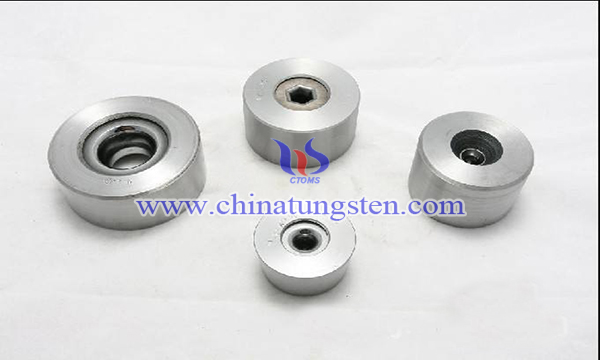Cold Working Methods of Steel Bonded Tungsten Carbide
- Details
- Category: Tungsten Information
- Published on Monday, 09 April 2018 17:49
The cold cutting properties of steel bonded tungsten carbide are far less than that of molten steel. Because of the high hardness, high strength, high wear resistance, large deformation resistance and large cutting resistance, the tungsten carbide billet must be spheroidizing and annealed before cutting. There are about 0.5 ~1.0 mm hard shells on the surface of the sintered alloy billets. Although the machinability is still poor after annealing treatment, the hard shell of this layer is removed before cold cutting, and then machined according to the normal procedure.

Cold working methods of steel bonded tungsten carbide are as follows:
1, Turning
Turning is the most cutting process in the cold cutting of alloy dies. And YGb, YGB, YW2 tungsten carbide are picked as turning tool. The speed of the lathe is 100-200 rev/min. When the diameter is smaller, than the upper speed is chosen. When the diameter is bigger, the lower limit is chosen. When the alloy hardness is high, the speed is slow, the hardness is low, and the speed is faster.
The feed rate is 0. 1-0. 5 mm. And the feed speed of slender workpiece should be small, not large, otherwise it will cause deformation, tool breaking or serious wear. The turning speed of the inner hole should be 500-100 rev/min slower, and YT15 carbide tools should be used first. The first cut of the rough car is 2-3 mm deep, and the 0. 5-1. 0 mm of the finished car is shallow. Generally, the 75-80° alloy tip is generally used, the front angle is 3-5°, and the rear angle is 5-7°.
Because the cutting toll is based on cutting and bonding with the matrix of gold steel and the hard phase in the tungsten carbide is torn down, the alloy chips are like cast iron chip, which is different from the melting of the molten steel. The turning is carried out in the dry state.
2, Filings
First, the YTS hard alloy tool is used. The front milling cutter has a negative angle of 2-4 °, the spindle speed is 70-80 rev/min, the milling depth is 0. 2-0. 5 mm, and the cutting speed is 30-40 mm/min. Milling angle is the key factor for smooth milling. The main deflection angle is 70-80°, the front angle is 6-8°, the tool inclination angle is 3-4°, the rear angle is 4-6°, and the tool tip is R1-R2. It is appropriate to use reverse milling and dry milling.
3, Grinding
After annealing, the amount of 0.2-0.3 mm is reduced, which can be grind by ordinary alumina wheel. The hardened tungsten carbide module is made of artificial diamond wheel. Because alloy quenching is high hardness and weak magnetic material, it is not fixed on magnetic worktable as smelting steel. Special fixture is needed. Because of the poor heat conductivity and large grinding heat, it is necessary to use nitrite aqueous solution or other emulsion to cool when the workpiece is burnt to cause cracking. The rotational speed of the workpiece is 200-300 rev/min, the speed of the worktable is 10 ~20 m/min, the feed rate of fine grinding is 0.1-0.3mm, the feed rate of rough grinding is 0. 5-1. 0 mm. Because the alloy distortion is only 1/1000, a small amount of grinding can be left. After grinding for 180 hours at temperature of 180 + 10℃, it can eliminate grinding stress and avoid cracking. Annealed alloy can also be used for cold cutting such as drilling, tapping, planing and so on.
- Tungsten Carbide Manufacturer & Supplier, Chinatungsten Online: tungsten-carbide.com.cn
- Tungsten News & Prices of China Tungsten Industry Association: www.ctia.com.cn
- Molybdenum News & Price: news.molybdenum.com.cn
- Tel.: 86 592 5129696; Fax: 86 592 5129797; Email: sales@chinatungsten.com



 sales@chinatungsten.com
sales@chinatungsten.com